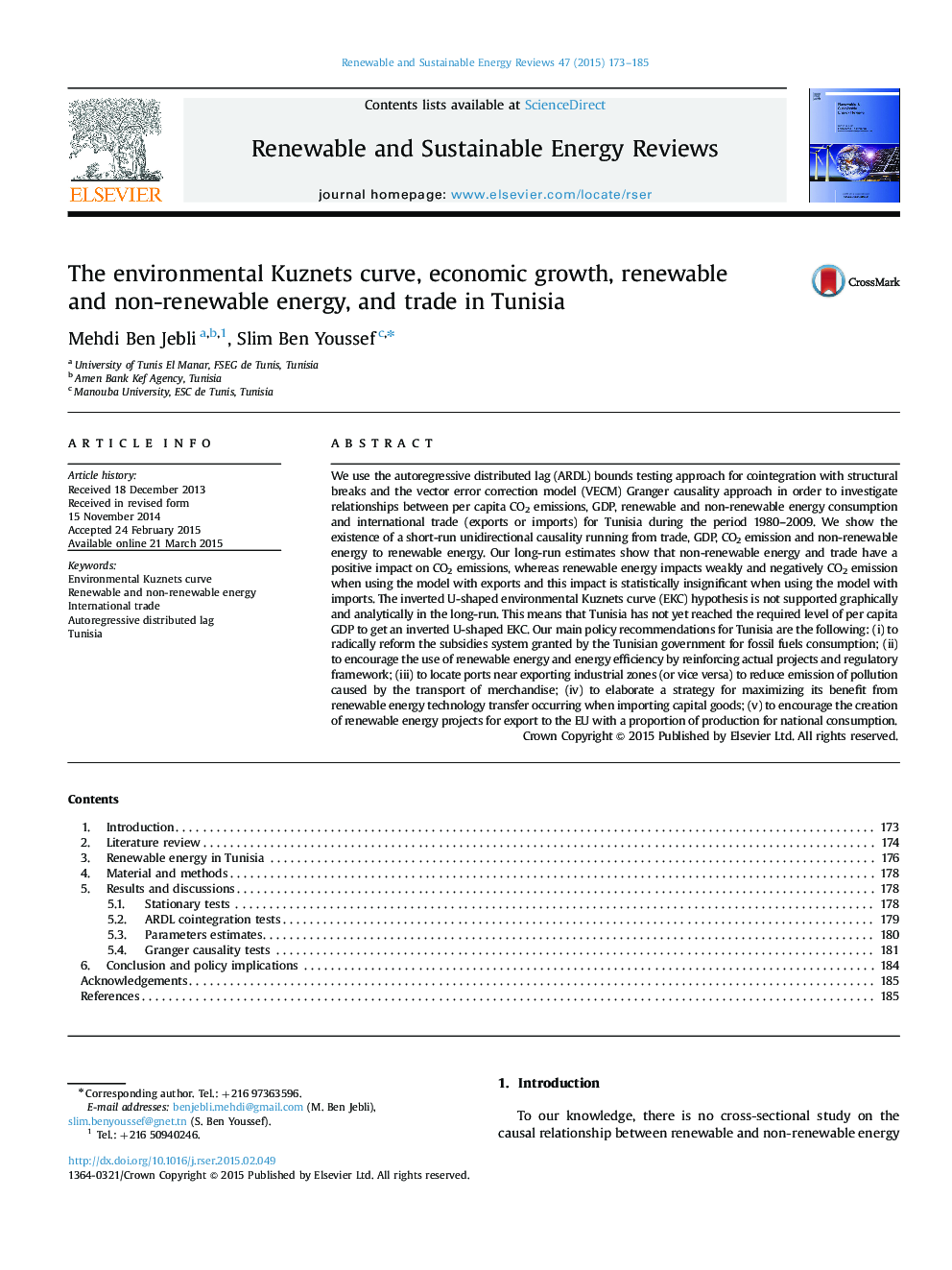| Article ID | Journal | Published Year | Pages | File Type |
|---|---|---|---|---|
| 8116665 | Renewable and Sustainable Energy Reviews | 2015 | 13 Pages |
Abstract
We use the autoregressive distributed lag (ARDL) bounds testing approach for cointegration with structural breaks and the vector error correction model (VECM) Granger causality approach in order to investigate relationships between per capita CO2 emissions, GDP, renewable and non-renewable energy consumption and international trade (exports or imports) for Tunisia during the period 1980-2009. We show the existence of a short-run unidirectional causality running from trade, GDP, CO2 emission and non-renewable energy to renewable energy. Our long-run estimates show that non-renewable energy and trade have a positive impact on CO2 emissions, whereas renewable energy impacts weakly and negatively CO2 emission when using the model with exports and this impact is statistically insignificant when using the model with imports. The inverted U-shaped environmental Kuznets curve (EKC) hypothesis is not supported graphically and analytically in the long-run. This means that Tunisia has not yet reached the required level of per capita GDP to get an inverted U-shaped EKC. Our main policy recommendations for Tunisia are the following: (i) to radically reform the subsidies system granted by the Tunisian government for fossil fuels consumption; (ii) to encourage the use of renewable energy and energy efficiency by reinforcing actual projects and regulatory framework; (iii) to locate ports near exporting industrial zones (or vice versa) to reduce emission of pollution caused by the transport of merchandise; (iv) to elaborate a strategy for maximizing its benefit from renewable energy technology transfer occurring when importing capital goods; (v) to encourage the creation of renewable energy projects for export to the EU with a proportion of production for national consumption.
Related Topics
Physical Sciences and Engineering
Energy
Renewable Energy, Sustainability and the Environment
Authors
Mehdi Ben Jebli, Slim Ben Youssef,
